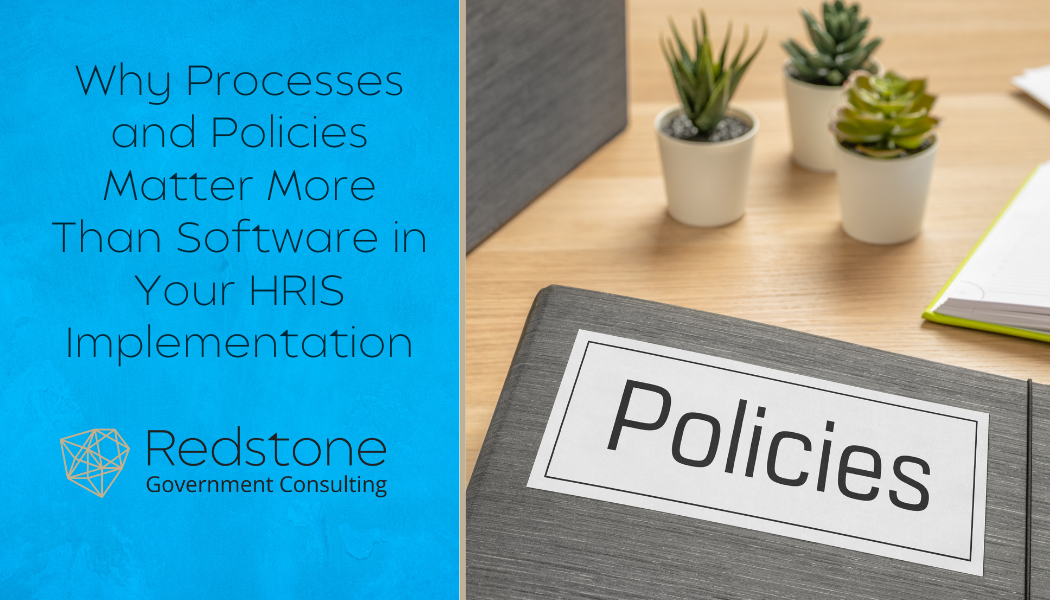As employers, balancing the needs of the business while also addressing workers’ legitimate requests can be challenging during a union strike or work stoppage. However, having the best knowledge and engaging in a proactive approach can be an opportunity to build stronger and more resilient labor relations. Strikes do not have to equate to a crisis. Understanding why they happen and knowing how to prevent or manage them effectively can make all the difference.
Topics: Human Resources, Organizational Change Management Consulting, Manufacturing Operations Consulting, Employers & Unions
A well-configured HR system can feel like the backbone of a thriving organization by streamlining processes, enhancing employee experience, and offering powerful data insights. However, even the most advanced HR technology can quickly become a liability if one critical element is overlooked - compliance. Government contractors risk turning their greatest HR asset into a hidden source of vulnerability if they fail to consider compliance in their implementation strategy.
Topics: Small Business Compliance, Contracts & Subcontracts Administration, DCAA Audit Support, Human Resources, Government Regulations, Office of Federal Contract Compliance Programs, Service Contract Act, Organizational Change Management Consulting, UKG Ready HR Software Consulting
Are you interested in learning how to set up and manage labor categories in Unanet to improve project management, timekeeping, and labor cost compliance for government contractors? Labor categories are critical for organizing and tracking work performed on contracts, especially on Time & Materials (“T&M”) contracts. While cost type and fixed price billing may not require a labor category for billing purposes, they can still play an important role in project management and budgeting at the contract level. In accounting systems like Unanet, these categories classify time into roles such as Project Manager or Senior Software Developer that are tied to billing rates, simplifying T&M billing. Unanet also provides flexibility in how labor categories are derived, allowing setup at the admin/master level, project level, person level, or person-to-project assignment level. This adaptability ensures alignment with contract requirements regardless of how your business is structured.
Topics: Compliant Accounting Infrastructure, Proposal Cost Volume Development & Pricing, Small Business Compliance, Contracts & Subcontracts Administration, Human Resources, Unanet
Successful Human Resources Information System (HRIS) implementation isn’t just about choosing the right system; it’s about aligning that system with your internal business processes and formalizing documented policies and procedures. In this article, we explore how clearly defined workflows, roles, and written policies are essential to getting the full value from platforms like UKG Ready, especially for government contractors where compliance is non-negotiable.
Topics: DCAA Audit Support, Human Resources, Office of Federal Contract Compliance Programs, Service Contract Act, UKG Ready HR Software Consulting
Labor relations is not just an HR function; it truly is a core leadership responsibility. Suppose your team is a current union organization or considering unionization. In that case, your frontline managers have to be trained to interact with unions not just legally, but also strategically and respectfully. Having untrained managers can quickly escalate potential issues without realizing it. Here is a comprehensive guide to train managers on effective union interactions.
Topics: Human Resources, Government Regulations, Organizational Change Management Consulting, Manufacturing Operations Consulting, Employers & Unions
While selecting the right HRIS system is a major process in itself, configuring it is a whole other piece of the puzzle. From the recruitment-to-hire process to timekeeping and payroll, it’s essential to set up the system optimally from the start to support compliance and ensure the most success as your business grows. When you add in the government contract compliance piece, the “puzzle” is even further complicated.
Topics: DCAA Audit Support, Human Resources, Office of Federal Contract Compliance Programs, Service Contract Act, UKG Ready HR Software Consulting
Accurate timekeeping is important to most businesses, but for federal government contractors, it is crucial to compliance and continued success. While timekeeping may seem like a straightforward and simple task, it can be daunting for those responsible for developing and implementing appropriate processes, systems, and audit trails. Improper procedures can quickly lead to reporting inaccuracies and audit nightmares! A well-designed process, accompanied by an accurately designed system and a well-documented and communicated policy, is critical.
Topics: DCAA Audit Support, Human Resources, Office of Federal Contract Compliance Programs, Service Contract Act, UKG Ready HR Software Consulting
What is collective bargaining? Collective bargaining is a collaborative process between employers and employees, where both sides work together to negotiate terms for a fair agreement that benefits both parties. Employees typically are represented by a union, and the goal is to ensure fairness and negotiate in good faith.
Topics: Human Resources, Government Regulations, Employers & Unions
In May of 2023, Ms. Jamie Brabston, Director and Legal Counsel at Redstone GCI, wrote an article addressing the Federal Acquisition Regulations (FAR) requirements expected of contractors receiving contracts for supplies and services from the federal government. These requirements are implemented through FAR 52.203-13, Contractor Code of Business Ethics and Conduct, which is included in contracts and subcontracts expected to exceed $6M, and the period of performance is 120 days or longer.
Topics: Contracts & Subcontracts Administration, Government Compliance Training, DFARS Business Systems, Human Resources, Government Regulations, Federal Acquisition Regulation (FAR), Grants & Cooperative Agreements (2 CFR 200), Organizational Change Management Consulting
Late yesterday, President Trump signed another Executive Order related to employment laws. This Executive Order (“Restoring Equality of Opportunity and Meritocracy”) takes aim at the use of “disparate impact liability,” which, the EO proclaims, “undermines our national values [and] also runs contrary to equal protection under the law and, therefore, violates our Constitution.”
Topics: Litigation Consulting Support, Human Resources, Government Regulations, Office of Federal Contract Compliance Programs, Service Contract Act










